1. Noncommunicable diseases like cancer, heart disease and diabetes, kill more people than anything else
Noncommunicable diseases (NCDs) like heart disease, cancer and stroke are responsible for three-quarters of all deaths, according to the World Health Organization.
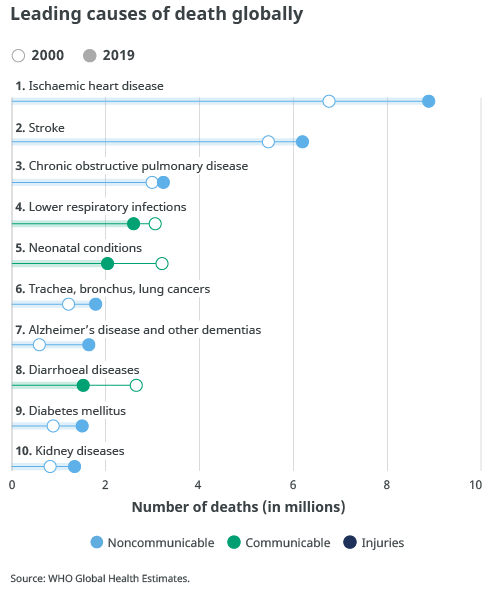
2. NCDs don’t just lead to premature death they are also the chief cause of disability
The 2019 Global Burden of Disease Report estimated that NCDs cause 80% of all disabilities.
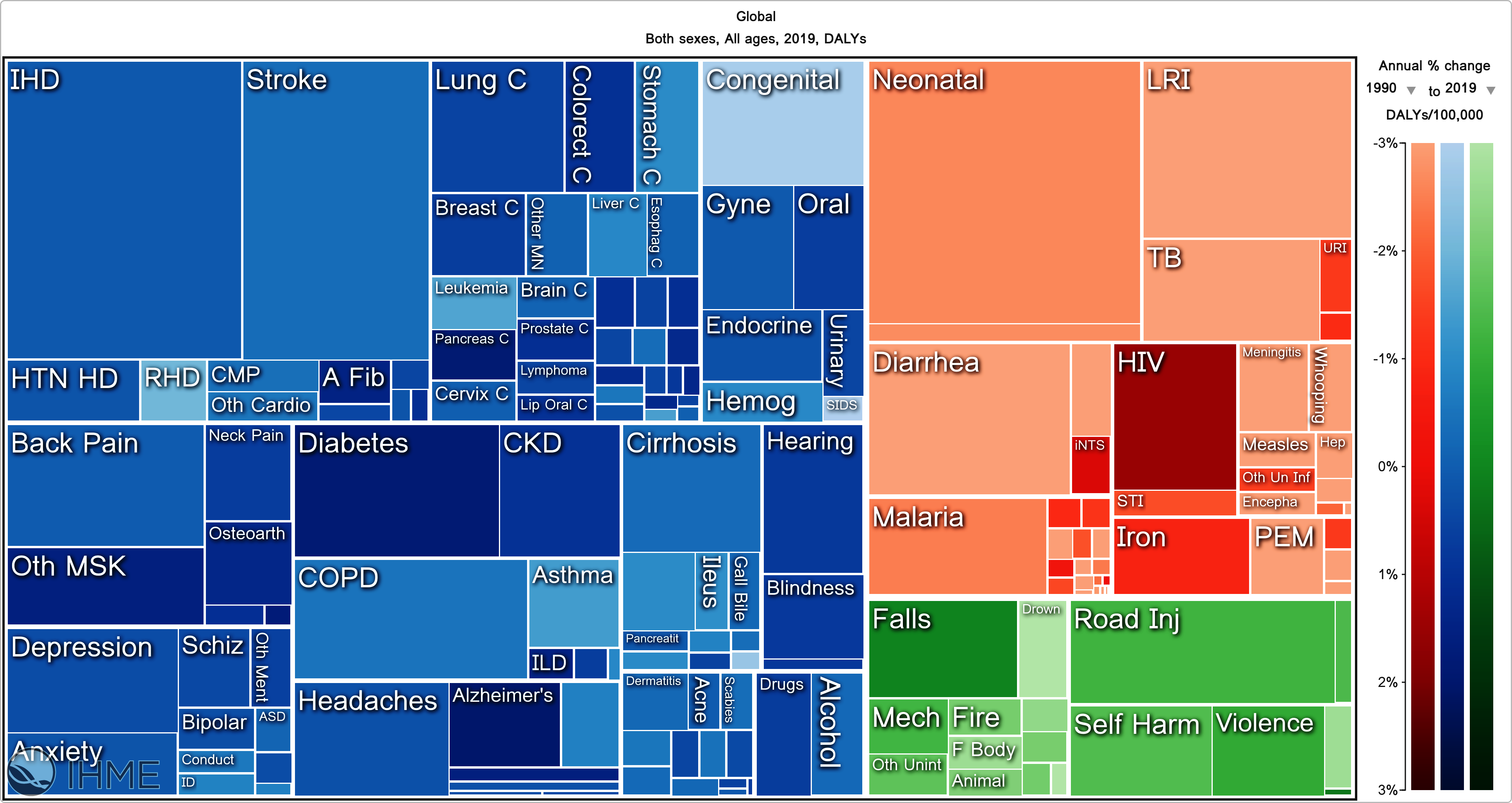
The blue areas of the chart denote noncommunicable diseases. The darker areas denote a worsening picture with diabetes, musculoskeletal disorders (Oth MSK) and Alzheimer’s growing in severity.
Source: Institute for Health Metrics and Evaluation/The Lancet
3. One-fifth of the world is living with at least one NCD
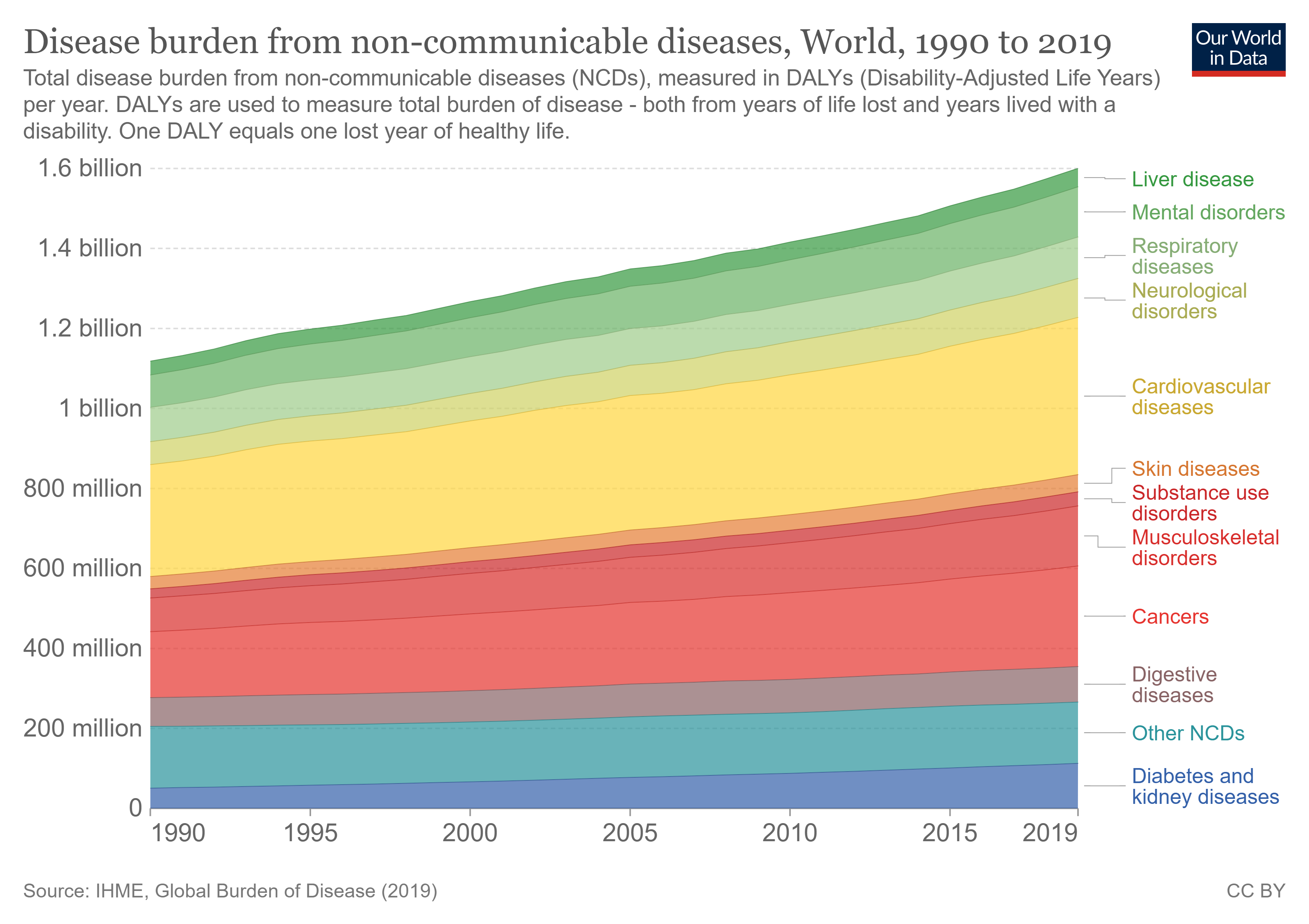
If you aren’t living with a noncommunicable disease then you are extremely likely to know someone who is. We are all affected by this NCD pandemic.
Source: Our World in Data
4. But NCDs are not a priority when it comes to resources
They get just 1-2% of global health spending, according to the World Health Organization. That’s in stark contrast to the financing devoted to communicable diseases, in particular HIV/AIDS.
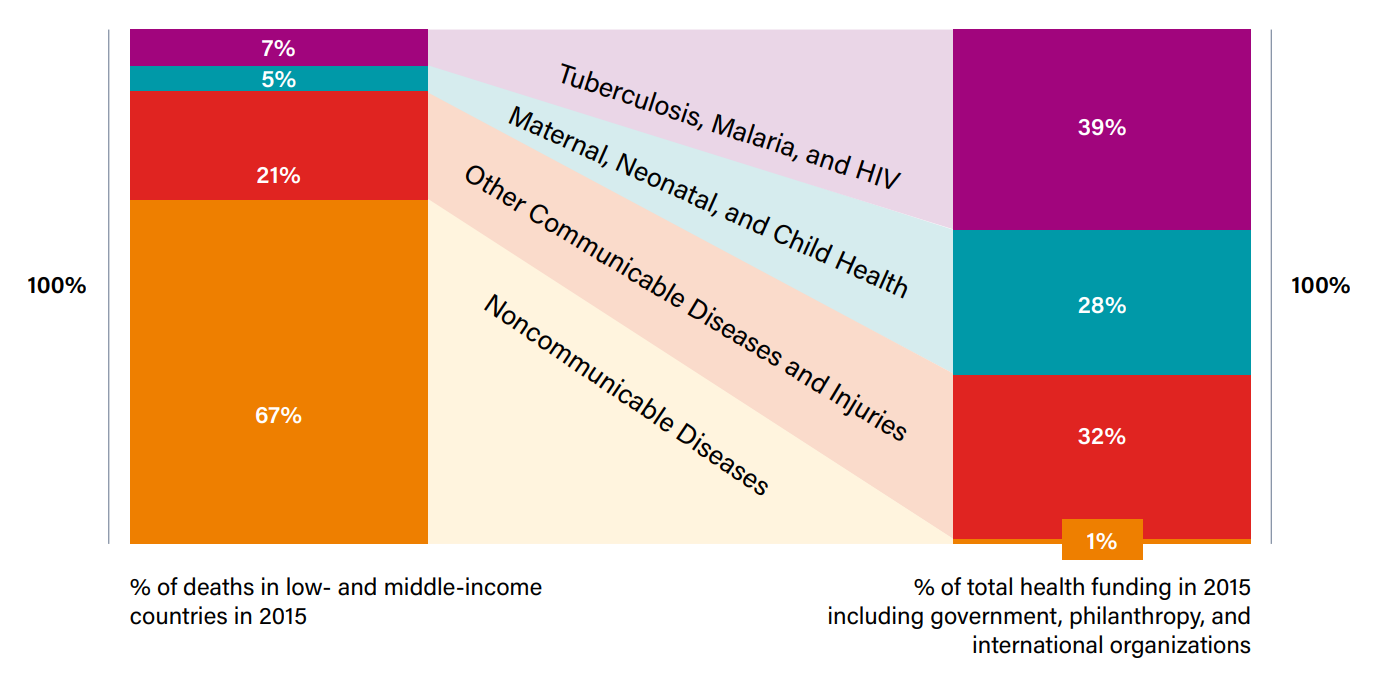
Source: Figure 5 from Invest to Protect
5. Each year, NCDs cost the global economy more than US$2 trillion
That’s the equivalent of losing the entire economic output of Canada every year. The losses come not just from the costs of treating those with NCDs but with the lost working days of so many people.
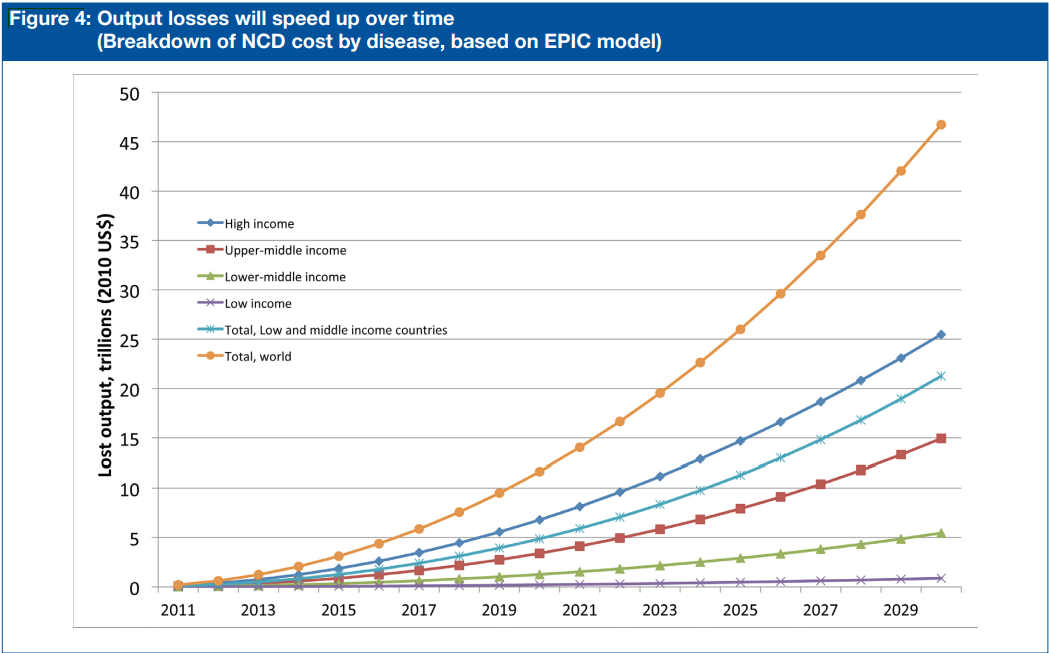
6. Governments are failing to deal with a rise in risk factors
There has been some success with smoking and household pollution from solid fuel but there’s an enormous challenge in turning the rising tide of obesity and diabetes.
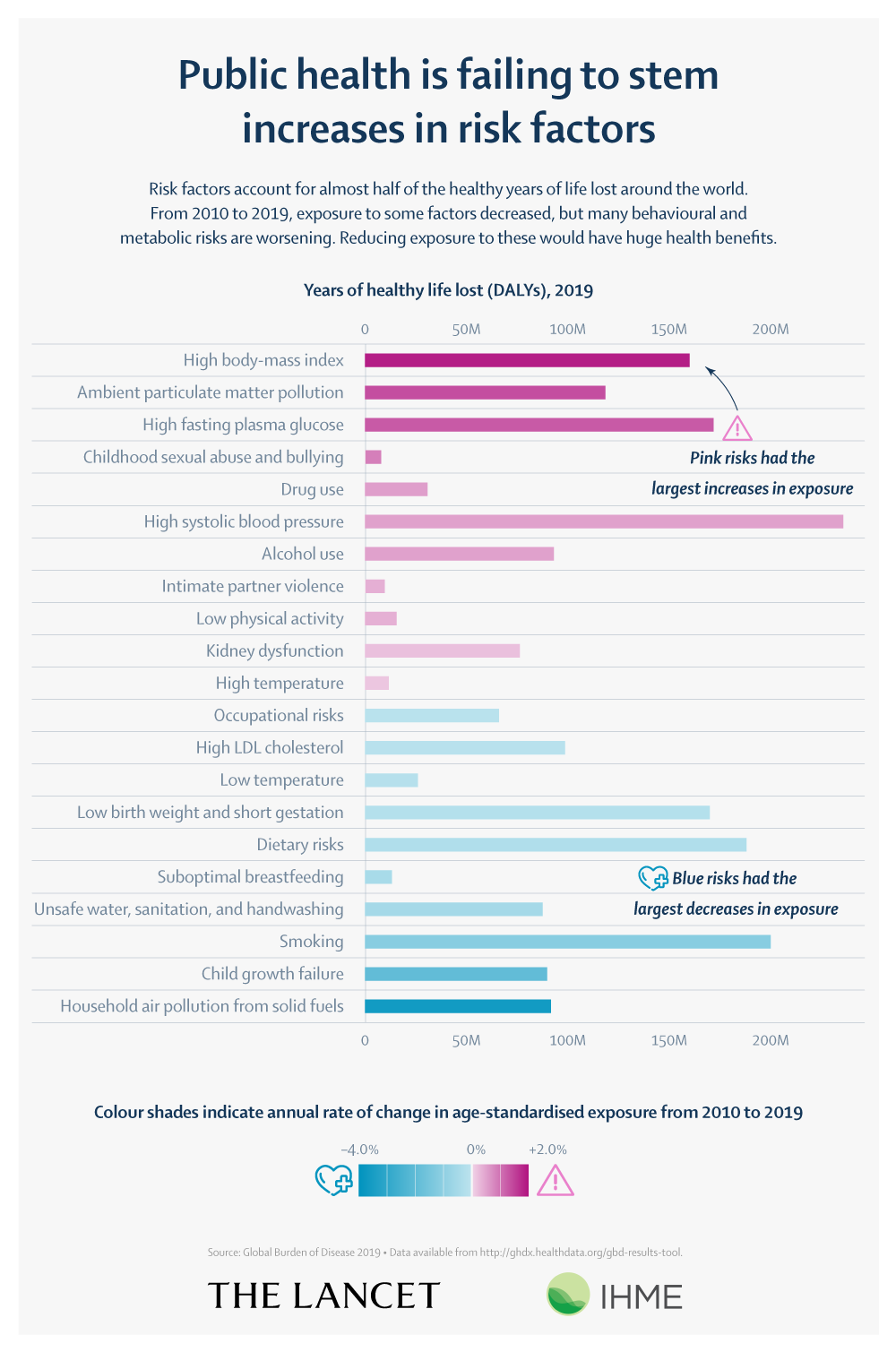
Source: Institute for Health Metrics and Evaluation
7. We’re behind on the targets all governments signed up for with the Sustainable Development Goals
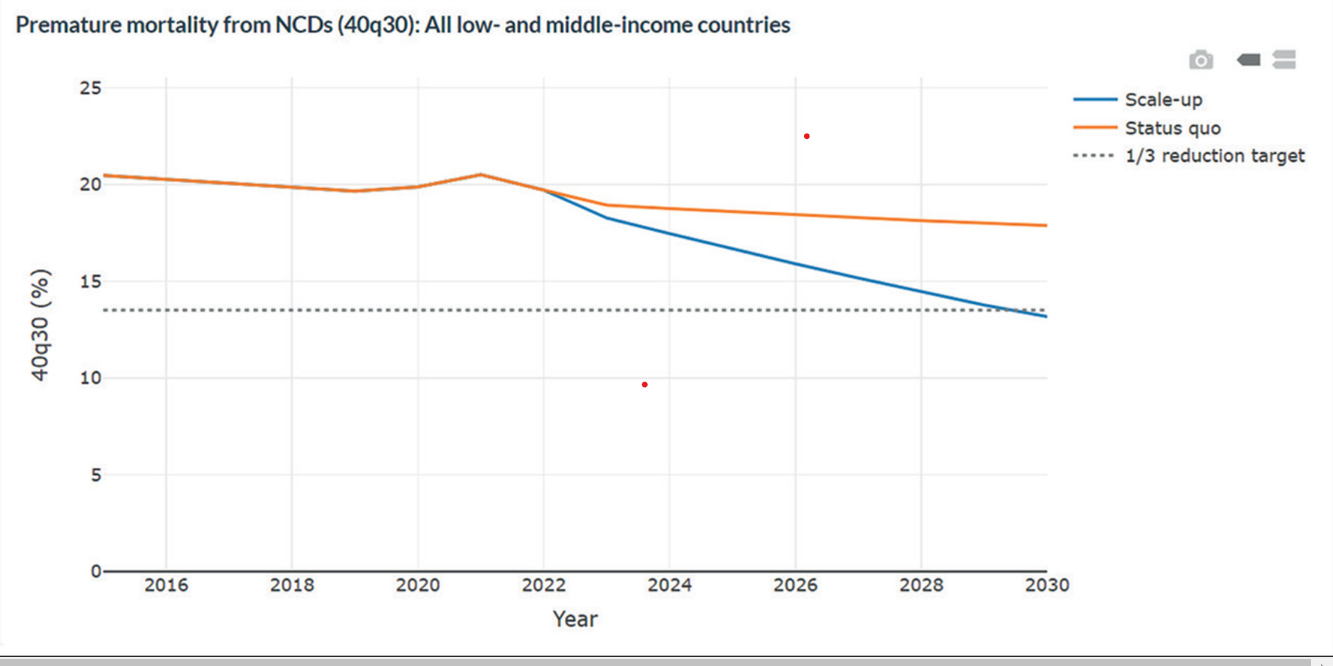
Source: The Lancet
80% of premature deaths from NCDs occur in low- and middle-income countries. The Sustainable Development Goal target is to reduce premature deaths by a third by 2030. The orange line on the chart shows that, on current trends, that target will be missed.
If we’re serious about reducing the impact of NCDs we are going to have to invest more in prevention, detection and early treatment.





